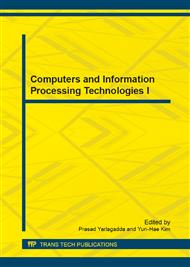p.721
p.725
p.729
p.735
p.741
p.747
p.753
p.757
p.764
Improved Face Recognition Using 2D-LDA with Weighted Covariance Scatter
Abstract:
In this paper, we propose a newly developed 2D-LDA method based on weighted covariance scatter for face recognition. Existing LDA uses the transform matrix that maximizes distances between classes. In LDA, we have to convert from an image to one-dimensional vector as training vector. In 2D-LDA, on the other hand, we can directly use two-dimensional image itself as training matrix, so that the classification performance can be enhanced about 20% comparing LDA, since the training matrix preserves the spatial information of two-dimensional image. However 2D-LDA uses same calculation schema for transformation matrix and therefore both LDA and 2D-LDA has the heteroscedastic problem which means that the class classification cannot obtain beneficial information of spatial distances of class clusters since LDA uses only data correlation-based covariance matrix of the training data without any reference to distances between classes. In this paper, we propose a new method to apply training matrix of 2D-LDA by using WPS-LDA idea that calculates the reciprocal of distance between classes and apply this weight to between class scatter matrix. To evaluate the performance of proposed algorithm, we use the ORL face database that includes 40 people and 10 images individually. The experimental result shows that the discriminating power of proposed 2D-LDA with weighted between class scatter has been improved up to 2% than original 2D-LDA. This method has good performance especially when the distance between two classes is very close and the dimension of projection axis is low.
Info:
Periodical:
Pages:
741-746
Citation:
Online since:
June 2014
Authors:
Keywords:
Price:
Сopyright:
© 2014 Trans Tech Publications Ltd. All Rights Reserved
Share:
Citation:


